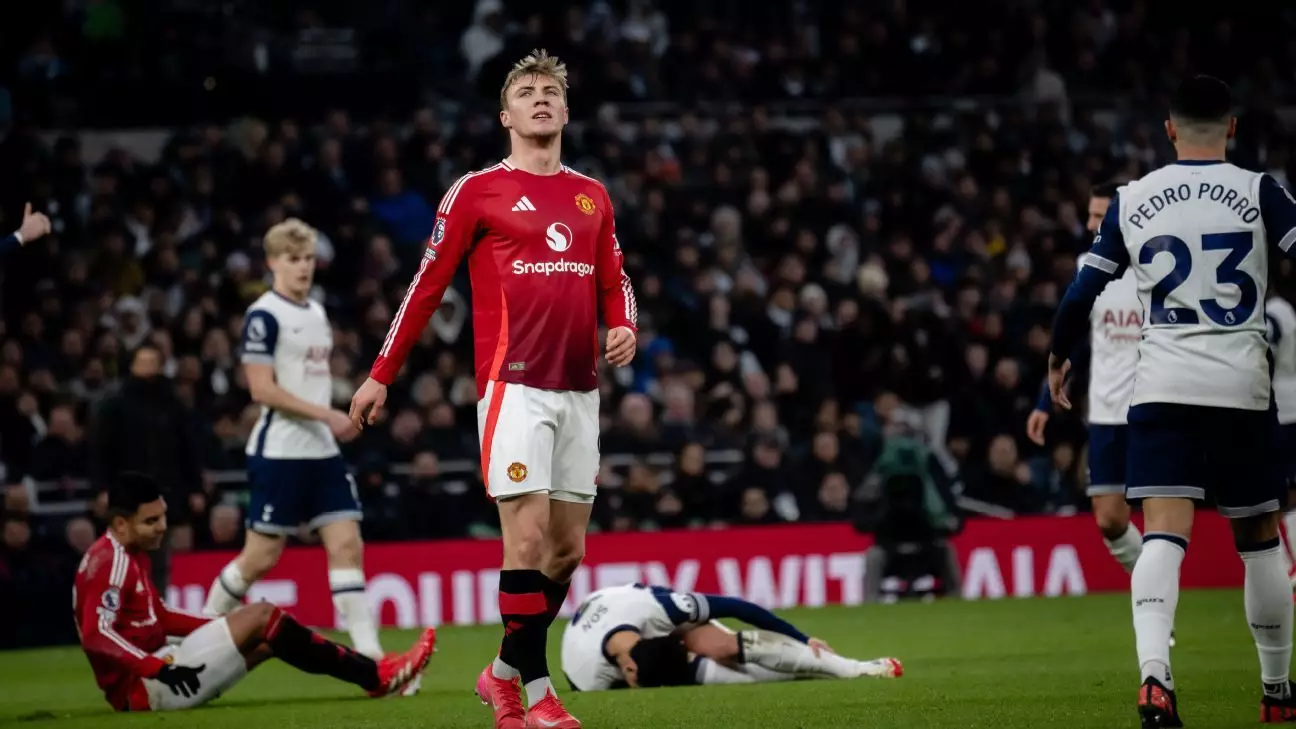In the world of football, the adage “if you don’t shoot, you don’t score” succinctly encapsulates the essence of what it means to be a forward. This basic philosophy is particularly relevant when analyzing Rasmus Højlund’s performance as Manchester United’s center forward. With a league-low average of just 1.20 shots per 90 minutes – significantly below his peers – one must question the underlying causes behind this alarming statistic.
To understand the implications of Højlund’s shooting numbers, it is crucial to place them within a broader context. Among players who have clocked over 1,200 minutes in the Premier League, 139 individuals, including defenders and midfielders, boast higher shots-per-90 averages. The immediate question that arises is why a central forward, a player typically expected to be the spearhead of the attack, is so far behind in this fundamental statistic.
When isolating Højlund’s performance within the sphere of elite strikers, such as Erling Haaland and Ollie Watkins – who register over three shots per game – the disparity becomes undeniable. This disparity raises pertinent questions about the effectiveness of Højlund’s positioning and his willingness to engage in the crucial act of shooting.
Systematic Influences on Højlund’s Game
The tactical systems employed by different managers can greatly impact the attacking responsibilities assigned to strikers. Rasmus Højlund’s performance under Ruben Amorim has drawn attention, particularly when compared to his former central forwards in other setups. At Sporting CP, Amorim’s previous center forward, Viktor Gyökeres, averaged a staggering 4.59 shots per 90 minutes. This striking contrast invites speculation about whether Højlund is failing to adapt to the Manchester United system or whether the system itself is failing to capitalize on his talents.
Furthermore, it’s not just Højlund who struggles with shot frequency; his predecessor at Manchester United, Erik ten Hag, operated a system that saw Højlund’s shot numbers marginally improve to 1.40 per 90 minutes—a figure still underwhelming when contrasted with industry standards. This raises the question: Are the current strategies and play styles contributing to Højlund’s lower shooting output, or is it a matter of personal efficacy in front of goal?
The Role of Confidence and Positioning
An underlying issue to consider in this narrative is the psychological component of Højlund’s approach to the game. Confidence, or lack thereof, can severely affect a player’s decision to take a shot. If a striker repeatedly misses or fails to convert, the initiative to shoot may diminish. Additionally, there’s the significant factor of positioning. An average of 2.10 shots per 90 minutes during his time at Sturm Graz and 2.65 at Atalanta shows potential. However, both of those environments were more conducive to attacking play, highlighting that the Manchester United system may not be providing Højlund the opportunities he requires.
Højlund’s deficiencies can’t merely be brushed aside as a personal shortcoming. While he has to take responsibility for elevating his game, the broader context including teammate Bruno Fernandes’ higher shot output and the distribution dynamics within the squad certainly shape opportunities. A center forward’s role often entails more than just striking; playmakers, movement off the ball, and support from teammates all converge to create an ideal scenario for scoring.
To find solutions to Manchester United’s goal-scoring woes, an analysis yields two critical components: Højlund’s development and Amorim’s tactical adjustments. For Højlund, enhancing his shooting frequency may require both psychological resilience and a refined sense of positioning within the box. Emphasis on individual drills and confidence-building exercises could help him feel more empowered to take shots when presented with opportunities.
On the tactical side, a reevaluation of the attacking system is paramount. If Højlund’s skills are not being utilized effectively, then the coaching staff must pivot their strategies to unlock his potential. Moreover, if shot numbers do not incline, a difficult decision may await Manchester United: to continue investing in Højlund’s development or seek out a more prolific option who can consistently challenge the opposition’s goal.
Rasmus Højlund’s shooting statistics tell a multi-faceted story that goes beyond individual failings. The intersection of coaching philosophy, player confidence, and systemic support all play crucial roles in shaping the effectiveness of a center forward. The road ahead demands collaborative effort, introspection, and strategic reworking to cultivate a player who, with time, could prove vital to Manchester United’s attacking ambitions.

